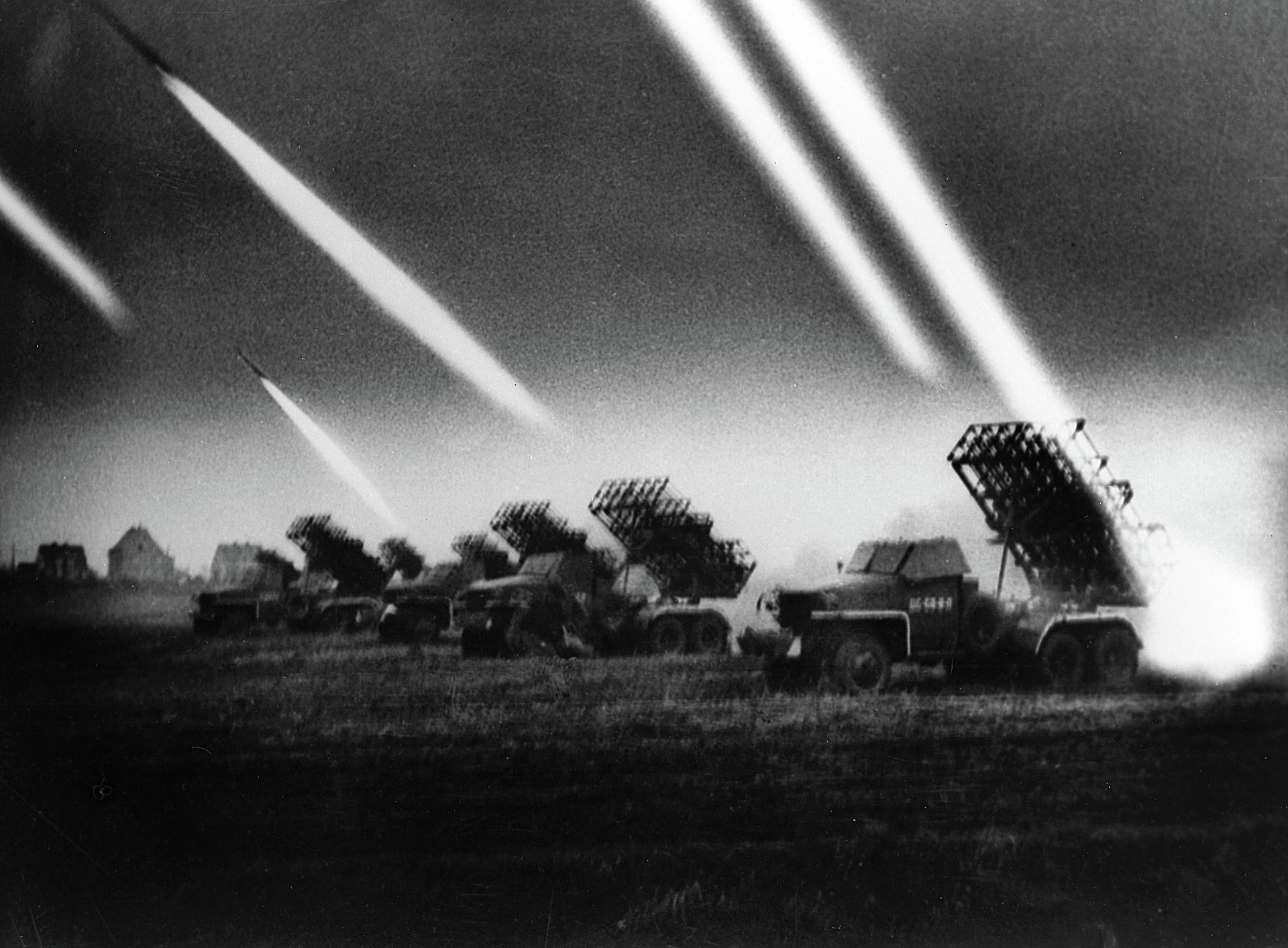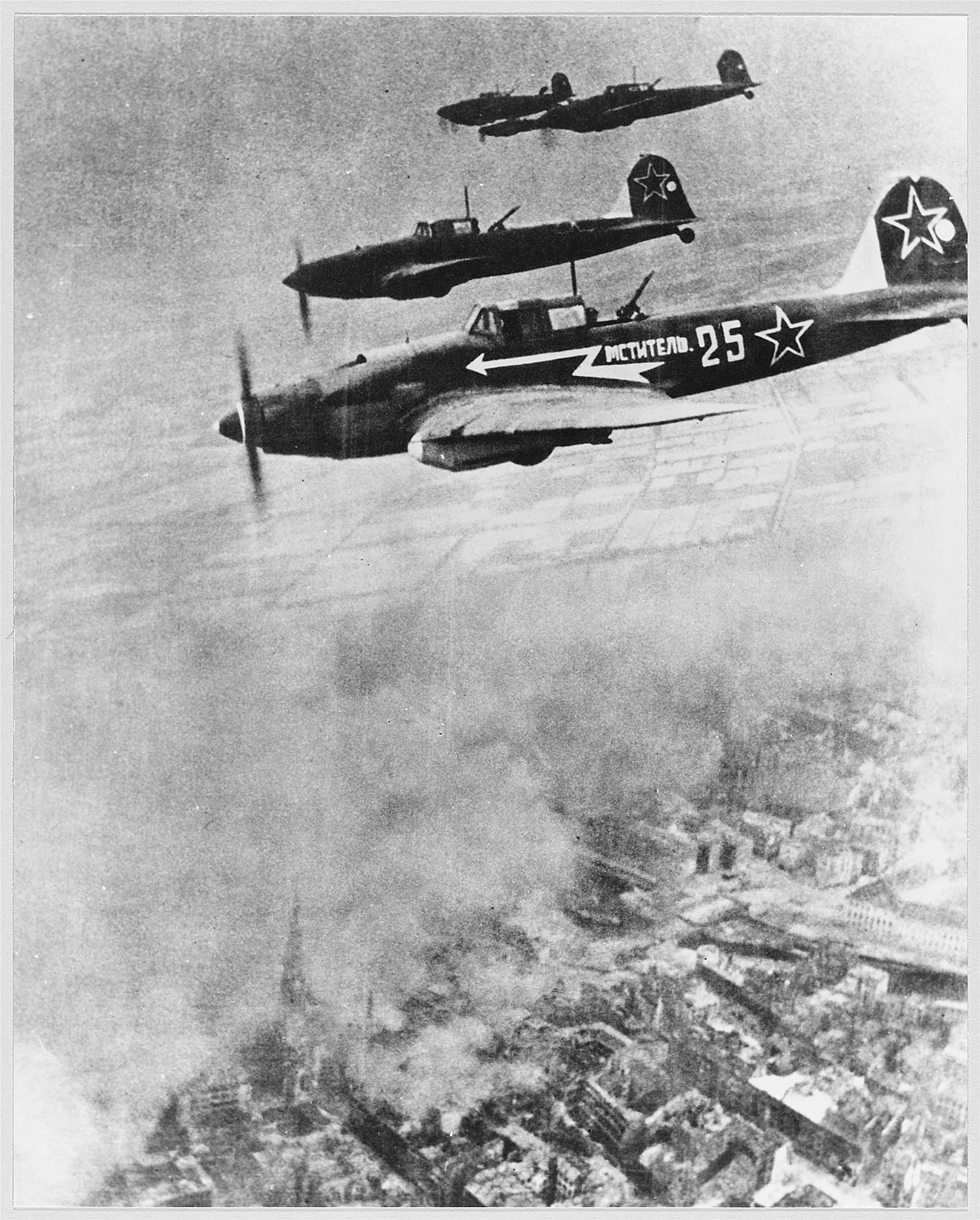Which Soviet war machines changed the tide of WWII
‘Katusha’ - the Soviet Union’s iconic rocket launcher

A salvo of guards mortar-guns. The 1st Ukrainian Front.
Timothy Miller/SputnikThere are a few theories about why the Soviet BM-13 rocket launcher was dubbed “Katusha,” a Russian girl’s name. One suggests the sound created when the weapon fires
The launcher was widely used by the USSR on the Eastern front line during WWII - it was a thorn in the side of the Germans: The sound of Katushka projectiles bearing down from above scared the living daylights out of the Nazi soldiers. Such a volley would destroy everything in its path, spreading shrapnel in all directions.
The system was very effective against infantry troops but not so good at taking out tanks and
T-34 tank

Sevastopol. USSR. A view of Lenin Street on a liberation day.
TASSIt combined incredible firepower (
Ilyushin Il-2 ground attack aircraft

Ilyushin IL-2 aircraft over Berlin. 1945.
Mary Evans Picture Library/Global Look PressAnother vital piece of military hardware that proved pivotal in the Soviet victory during WWII, this aircraft had two nicknames: “Flying Tank” due to its thick armor and “Hunchback” due to its looks.
The II-2 was not the most maneuverable of planes but it was one of the most effective and took down German aircraft as well as ground and sea
On a single tank of
One of the II-2’s most interesting features was its ability to land it on its belly without landing gear if it suffered an emergency mid-flight.
If using any of Russia Beyond's content, partly or in full, always provide an active hyperlink to the original material.
Subscribe
to our newsletter!
Get the week's best stories straight to your inbox